|
Order: Coleoptera: Derived from the Greek words "koleos"
meaning sheath and "ptera" meaning wings, refers to
the modified front wings which serve as protective covers for
the membranous hind wings. By far the most diverse organisms on
the planet; out of all living things including plants, 1 in every
5 is a beetle. 1 in 4 animals is a beetle. They live in virtually
every imagineable habitat from desert, to underwater. Beetles
have quite a collective arsenal to defend themselves as well such
as the aptly Bombardier Beetles, Blister Beetles, and even Lady
Bugs who bleed a sticky yellow liquid repellent from their knees.
Their bright advertising colors make them favorites among collector.
Some insects you might not realize as part of the Beetle order
are fireflies, glow worms, and weevils.*
|
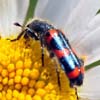 Checkered Beetles:
Checkered Beetles:
Great coloring, some agile predators of other insects, others
are pollinators. Some mimic velvet ants, wasps or fireflies.
|
 Dermestid Beetles:
Dermestid Beetles:
Includes Carpet Beetles and Skin beetles, pests of stored
products. In the wild occur in dry carrion, bird and mammal
nests; others feed on pollen.
|
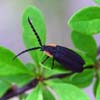 Fireflies: Fireflies:
Aka lightning bugs, caused by a chemical reaction catalyzed
by an enzyme, not all adults glow. Hide heads under a thoracic
shield.
|
|
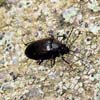 Ground Beetles : Ground Beetles :
Usually black and nocturnal, found under rocks and logs.
Many defend with noxious secretions and are mostly predatory.
|
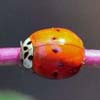 Lady
Beetles: Lady
Beetles:
Aka ladybird beetles or lady bugs, favored for aphid eating
and coloring. Many defend by reflex bleeding, oozing chemicals
from knees.
|
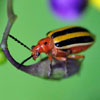 Leaf
Beetles: Leaf
Beetles:
Diverse colorful vegetarians, most host specific (picky
on one plant). Some cause serious crop damage, others control
noxious weeds.
|
|
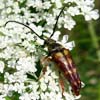 Long-horned
Beetles Long-horned
Beetles
Larvae bore through wood or mine live plants, adults feeding
on foliage, bark and flowers. Very long antennae and broad shoulders.
|
 Metallic Woodborers : Metallic Woodborers :
Also called jewel beetles or buprestids, named for their often metallic sheen and wood boring larvae; adults feed on flowers and leaves.
|
 Net-winged Beetles Net-winged Beetles
Closely resemble fireflies, but typically have a raised, netlike pattern of veins on wings. Bright coloring suggests nasty flavoring.
|
|
 Scarab Beetles : Scarab Beetles :
Very diverse, include the biggest insects. Include Chafers, Flower, May, June, Dung, Rhino, Stag, invasive Japanese Beetles and more.
|
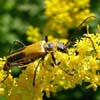 Soldier Beetles: Soldier Beetles:
Aka leatherwings. Skilled fliers and valuable pollinators,
many also eat aphids and other insects. Adults often mimicked
by other insects.
|
 Tiger Beetles: Tiger Beetles:
Swift hunters and beneficial predators of pest insects, they sport wicked looking jaws, big eyes and are usually quite colorful.
|
|
 Tumbling
Flower Beetles: Tumbling
Flower Beetles:
The name says it all, I have witnessed their escape act many a time. Wedgelike shapes, common on flowers especially parsley.
|
 True Weevils: True Weevils:
Have elbowed antennae, others long snouts. Nearly all are vegetarian at all stages, and some play dead when disturbed. Cute buggers.
|
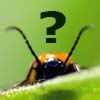 ID
ME: ID
ME:
With such variety, diversity and populations, some were a bugger to ID.
|
*Excerpted from Kaufman Field Guide to Insects of
North America
|



